Your cart is currently empty!
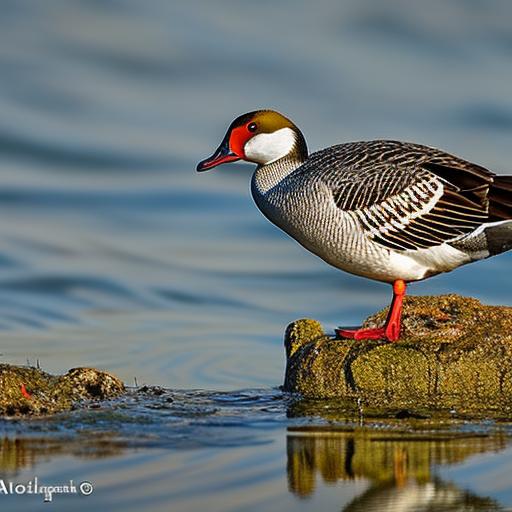
Challenges of Hunting Geese Without Decoys – And How to Overcome Them!

Table of Contents
Introduction
Ah, the art of hunting geese. For many of us, there’s nothing quite like the thrill of setting up our decoys and lying in wait. But have you ever considered the challenge and allure of hunting geese without decoys? It’s a game-changer, I assure you. I remember the first time I ventured into the wetlands without my trusted decoys by my side. The feeling was equal parts liberating and nerve-wracking. You see, relying solely on your wits and understanding of geese behavior takes the hunting experience to a whole new level. The tradition of hunting geese with decoys has its own charm, but mastering the art of hunting geese without decoys offers a unique set of challenges and, in return, some incredibly rewarding experiences. Whether you’re a seasoned hunter looking to switch things up or a newbie wanting to test your skills, this guide is for you. Buckle up; we’re in for an enlightening journey!
Understanding Goose Behavior
Natural Patterns
Every seasoned hunter knows that the secret to success isn’t just about having the right gear or technique – it’s also about understanding your quarry. When it comes to hunting geese without decoys, this becomes all the more critical. Geese, like many creatures, are creatures of habit. They have daily routines that they stick to, whether it’s feeding in the early morning and late afternoon or settling down to roost when the sun dips below the horizon.
These patterns are largely influenced by their migratory habits. As they move seasonally, geese will scout for areas rich in food and safe from predators. Identifying these hotspots is your first step. Observing local bodies of water, agricultural fields, or even urban parks can provide clues to their preferred haunts.
Sight and Sound
Now, let’s chat about the other half of the equation: their senses. Geese have sharp eyes, and their field of vision is vast. Ever tried sneaking up on one? Not an easy task, I’ll tell you. Couple that with their varied and communicative calls, and you’ve got a bird that’s both watching and listening for danger – or in our case, hunters.
Recognizing different goose calls can give you an upper hand. From honks to murmurs, each sound conveys a distinct message – be it alerting others of danger, communicating with their young, or simply touching base with the flock. For the hunter opting out of decoys, understanding these vocalizations can signal when to remain still, when to ready for a shot, and when to simply enjoy the scenery.
Overcoming the Challenge
Alright, now for the golden question: how do you use all this knowledge to your advantage when hunting geese without decoys? First off, become a part of the landscape. Camouflage isn’t just about wearing the right gear; it’s about blending seamlessly into the environment. Use natural covers like reeds, tall grasses, or even ditches to remain unseen.
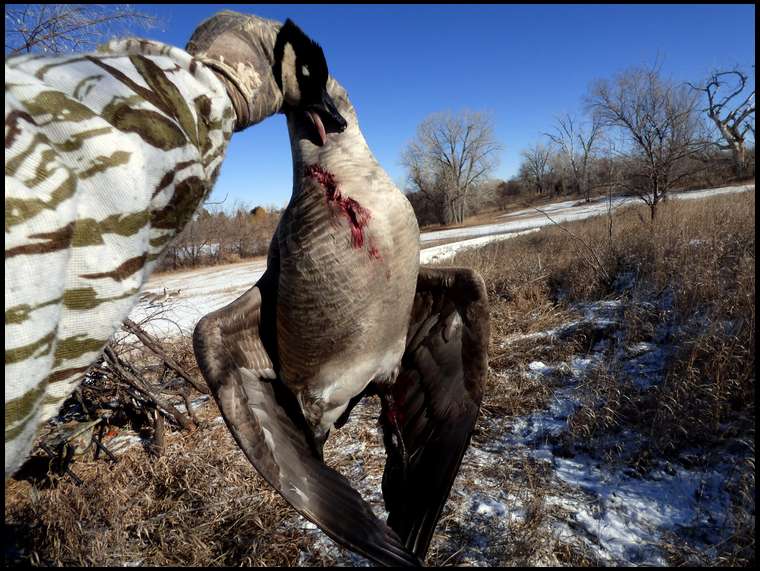
Furthermore, pay close attention to the wind. Geese have a keen sense of smell, and you’ll want to approach from downwind whenever possible. Finally, be patient. Unlike hunting with decoys where you bring the birds to you, hunting without them requires a bit more observation, waiting, and adapting to their behavior.
Positioning and Approach
The Importance of Stealth
Being stealthy while hunting might seem like an obvious strategy, but when you’re hunting geese without decoys, it’s a whole different ball game. Decoys act as a distraction, drawing the bird’s attention and giving hunters a bit more leeway in their movements. Without them, you’re on their radar, quite literally. Every rustle of the grass, every misplaced step can send a flock soaring away, out of your reach.
You see, geese have an uncanny ability to pick up on anything out of place in their environment. Without the visual distraction of decoys, they rely even more on their senses to detect potential threats. So, the name of the game? Be invisible, be silent, be still. Your aim is to be a ghost in the landscape, unnoticed and undetected.
Scouting the Right Spot
Choosing the right hunting spot is half the battle. Think of it as setting the stage for a performance. You’ve got to know where the action happens. Geese, being creatures of routine, will often have specific areas they favor for landing, feeding, and taking off.
To identify these hotspots, some old-fashioned recon is in order. Study the patterns over a few days. Look for areas where geese consistently land or feed. Check out bodies of water, open fields, or even elevated areas that offer a good vantage point. It’s also beneficial to track their flight paths, as these can offer clues to their daily routines and preferred locations.
Overcoming the Challenge
Alright, so you’re positioned well and you’ve mastered the art of being unseen. Now comes the real challenge: getting close enough for a shot, especially when you’re hunting geese without decoys. This is where the “spot and stalk” technique comes into play. It’s exactly what it sounds like – spotting the geese first, then slowly and methodically stalking closer.
Make use of natural blinds, whether that’s a thicket of brush, a fallen tree, or a natural depression in the ground. And remember, patience is your greatest ally. Sometimes, it’s all about waiting for the geese to come to you rather than the other way around.
Lastly, when that perfect shot presents itself, after all your preparation and patience, take a deep breath and make it count. Remember, the beauty of hunting geese without decoys is in the raw, unfiltered interaction with nature. Every challenge overcome is a lesson learned and a story to share back at camp.
The Right Equipment
Decoy-Free Doesn’t Mean Equipment-Free
Alright, let’s debunk a myth right off the bat. Just because you’re hunting geese without decoys doesn’t mean you stroll out into the wild with just your shotgun in hand. No sir! Going decoy-free shifts the emphasis to other equipment that can make or break your hunting experience.
First, a good pair of binoculars is essential. Spotting your quarry from a distance gives you the advantage of planning your approach. And don’t skimp on a reliable, lightweight shotgun. Given that you’ll likely be moving more and waiting less, something that doesn’t weigh you down is preferable. Lastly, consider investing in a quality game call. While not a substitute for decoys, it can be the cherry on top to lure in that wary flock.
The Role of Camouflage
Camouflage. It’s not just about looking cool (although, let’s admit, it does give you some style points in the hunting community). When you’re going toe-to-toe with geese without the aid of decoys, being unseen is half the battle.
Here’s the scoop: geese have impressive vision. They see colors and details with remarkable clarity. So, while you might think you’re well-hidden, to a goose, you might as well be waving a neon sign. That’s where the right camouflage comes in. From headgear to boots, every inch matters. Opt for patterns that match your environment. Wetlands, fields, and wooded areas each have their specific hues and patterns. And don’t forget about face paint or masks. A shining face can be a dead giveaway, especially during sunrise or sunset hunts.
Overcoming the Challenge
Navigating the world of hunting gear can feel like a maze. So, let’s break it down. For wet terrains, waterproof boots are your best friend. Nothing kills the hunting spirit faster than wet socks, trust me. For those cold morning hunts, thermal wear and insulated gloves are essential. Keep an eye out for gear with noise-reducing materials; rustling clothing can alert geese to your presence.
For evening hunts or cloudy days, consider darker shades of camouflage. In brighter conditions, go lighter. And always, always have a reliable waterproof bag to store your equipment. Weather can be unpredictable, and you don’t want a sudden downpour to damage your gear.
In conclusion, while ditching the decoys adds a layer of challenge to goose hunting, equipping yourself correctly can tilt the odds in your favor. It’s about blending in, being prepared, and adapting to the environment around you. After all, hunting is not just about the catch, but the experience and lessons along the way.
Related Questions
Is hunting without decoys more ethical?
Ah, the age-old debate of ethics in hunting. Going decoy-free does strip down the experience to its purest form, where it’s just the hunter, their skills, and the geese. In some ways, it’s more of a fair game, giving the geese a bit more of an even playing field. However, the ethics of hunting methods often boil down to personal belief and cultural practices. What’s most important is respecting the game and ensuring sustainable hunting practices, regardless of the method chosen.
What are the success rates of hunting geese without decoys compared to traditional methods?
Well, I won’t sugarcoat it—hunting geese without decoys is a tougher challenge. Traditional methods using decoys might yield higher success rates simply because you’re luring the geese to a specific spot. Going decoy-free requires more patience, observation, and adaptability. However, while the catch numbers might be fewer, the satisfaction and thrill of the hunt can be much more rewarding for some. It’s about quality over quantity, in a way.
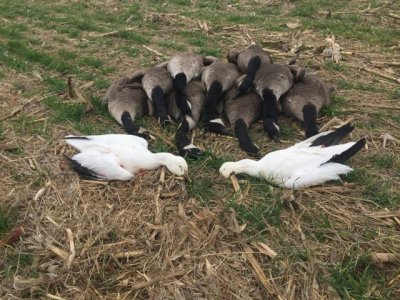
How do other birds react to no-decoy hunting techniques?
Interesting question! Without decoys, other birds in the vicinity might be less disturbed, as there aren’t any artificial elements to pique their curiosity or alarm them. In many cases, ducks, herons, or other waterfowl might continue their routines unaffected. On the flip side, this means the hunter needs to be extra stealthy and mindful of all the birds around, not just the geese, to avoid spooking the entire area.
What other techniques can be combined with no-decoy hunting for greater success?
There’s a world of tricks up the seasoned hunter’s sleeve! Using goose calls can significantly up your game. Mimicking their vocalizations can attract geese from afar or calm a flock getting too suspicious. Additionally, mastering the “spot and stalk” method, where you identify a flock from a distance and approach stealthily, can prove fruitful. Finally, always factor in the wind direction; ensuring you’re downwind from the geese will mask your scent and give you a sneaky advantage. Combining these strategies with a decoy-free approach can lead to some thrilling hunts!
Summary
In this dive into the fascinating world of hunting geese without decoys, we’ve explored the intricacies of goose behavior, the significance of stealthy approaches, and the importance of having the right gear. But beyond the practical tips and techniques, there’s an underlying theme here: embracing the pure, unfiltered connection with nature. When we strip away the decoys and challenge ourselves to engage with these majestic birds on their terms, we’re not just hunting – we’re participating in an age-old dance that has been going on long before we picked up our first shotgun. Whether you’re an old hand at waterfowl game or you’re just dipping your toes into these waters, the world of hunting geese without decoys offers an enriching, immersive experience that you won’t soon forget. So, the next time you head out into the field, consider leaving those decoys behind. Who knows? You might just discover a newfound passion and a fresh perspective on a classic hunting tradition. Happy hunting, friends!

Herb has been a longtime lover of the outdoors. Whether it be hunting, camping, fishing or just getting outside to reset. Proud father and animal lover. Bourbon anyone?

by
Comments

Categories
- Big Game Hunting (301)
- Deer (202)
- Reviews (3)
- Shooting (16)
- Slingshot (1)
- Small Game Hunting (42)
- Upland Hunting (126)
- Waterfowl Hunting (3)

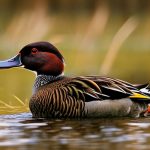

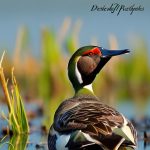

Leave a Reply